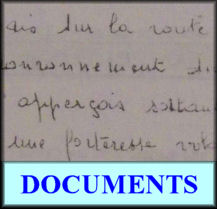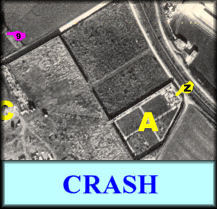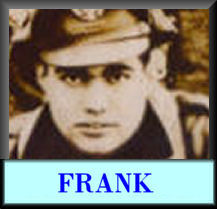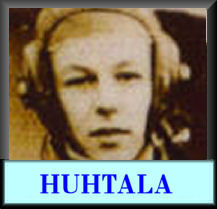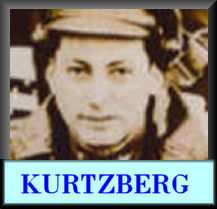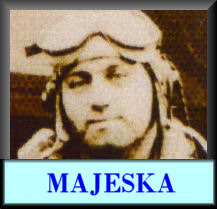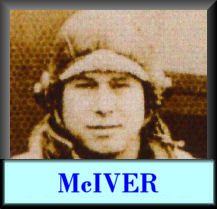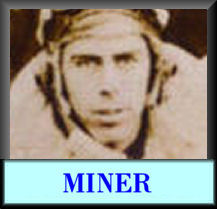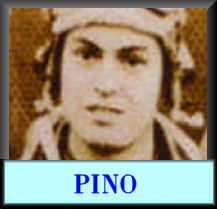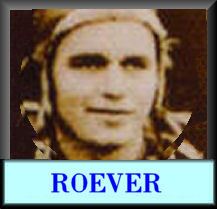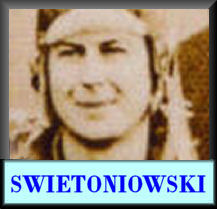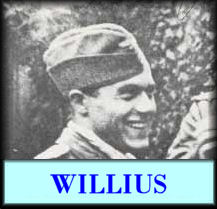Letter from Stan Peterson, dated June 22,1995
Of B-17 Bomber in formation with Joe’s plane.
« On Sunday morning February 6,1944, we sat in the briefing room waiting our instructions for the mission to follow. As the briefing room curtain pulled back, it revealed the route to Romilly-Sur- Seine, a location east of Paris and the target of our next bomb run.
That Sunday morning, I was flying a “make-up” as we called them and the only mission I did not fly with the crew of "The Saint” with which I had trained and had flown all my other fourteen missions. One of those missions was our first in an all new B-17 bomber number 238015 to Wilhelmshiubn on the morning of Sunday (Friday) February 4th.
Our instructions were for a visual bomb run. Weather experts predicted clear skies. all the ports of east Anglia became alive as the machines of the 8th and 9th Air Forces prepared for another incursion of the air space over Europe.
As I review in my memory, that morning of February 6th 1944,1 recall several members of my crew came out to see me off as l joined a new group of airman, and expressed hope that the 238015 would return to Snetterton-Heath and be available for our final “run-for-the-roses”the names given to the to the last assigned 25th mission.
A line of Flying Fortress with their tall tails pointing to the overcast sky above line the runway. As we smooth our descend into the heavens, I feel an anxiety that only those of us that have experienced the turmoil of war can feel, hoping that my crew which I had felt behind to fly my 15th mission with a new crew were waiting for my return. The huge B-17 levels off at around 12,000 feet. The solid cloud cover over east Anglia lends an eerie darkness to the sky limiting our view. As we continue to our target area and the plane makes a break from the clouds, we can see the early morning sun penetrating the clouds exposing some beautiful sun Light. all is well for a few minutes. Shifting our weight into our bucket seats for a smooth ride to our destination, we feel comfortable in the knowledge that we had done this before and it would be over within a few hours.
Suddenly, we are confronted with a massive problem. A squadron of B-26 bombers from the 9th Air Force on their way to the low lands intrude into our air space. Like a swarm of angry killer bees they fly directly into our line of flight. Our group, wing flares bursting were flying off in almost every direction in that early morning sky as we accept our new position in the line of march to Romilly-Sur-Seine. Entering the target zone, the famous 96th Bomb Group with nineteen strong, well organized flying fortress machines settled into position. The airwaves were full of very loud and explicit expressions as to which position the aircraft had been assigned but in the end the good soldiers of the 96th settled in and fly their assignments.
As I review my position with my new crew, we find ourselves flying in the low squadron above and to the left of Lt. Kurtzberg plane, the new B-17E Fortress number 238015. The mission continues to the target without any enemy resistance. Arriving at the target area the sky over Romilly is engulfed in a dense cloud cover. Following our instructions for a Visual drop, we cancelled the bomb run and return to home base.
About twenty minutes into our retum trip approximately 10:30 AM, local time, our top turret gunner reports enemy fighters at one o'clock. A position on the clock bearing left of our flight path. I glance down at NO. 238015 flying off our right wing and observe what appears to be an explosion directly in the pilots cabin. I can see both the pilot Lt. Kurtzberg and co-pilot Miner slump over the controls as the big fortress assumes a nearly vertical decent into the clouds far below. Our waist gunner and bail turret gunner follow the fatal plunge of 238015 to the point where it enters the clouds and disappears. My crew reported that no parachutes were seen.
The rest of the mission proceed without enemy interference. But far down in the village of Pisseleux, that early Sunday morning of February 6th 1944, the good people of Pisseleux, a suburb of Villers-Cotterets in France, were to experience an event that will linger with them for the rest of their lives. The terrible explosion and subsequent discovery of the airmen’s young bodies and a lone survivor emerging from a pile of sawdust is a living reminder of the terrible price and sacrifice that was made to finally bring their community liberation and freedom. »
« I decided not to keep a diary as one of the officers in our mission hut seemed to spend hours writing down what he had experienced only to fail to return and later, we were informed that he was KIA (Killed In Action)
Superstition played a big part in the combat crews activities. For instance, I wore the same long john underwear, without laundering them, for 25 missions. Then upon my return from the 25th mission and a few celebrating moments at the local bar after darkness had fallen, the crew went to a farmers haystack near our hut, set the stack on fire and with much ceremony, threw my 25th mission underwear into the fire causing a big explosion.
My fellow navigator kept a complete diary as did his pilot and nearly went down with the Kurtzberg crew. Later, on their 28th mission, they were hit. They all bailed out over Germany and spent a year as prisoners of war. Nervousness tends to make you superstitious. On February 25,1944, I sat directly behind a navigator at our briefing. He was killed in action. From then on, I always sat in another seat but his. Our co-pilot was also killed on that mission. We flew to our target area to Regessberg, Germany flying over Villers-Cotterets going and coming back to our base. |





